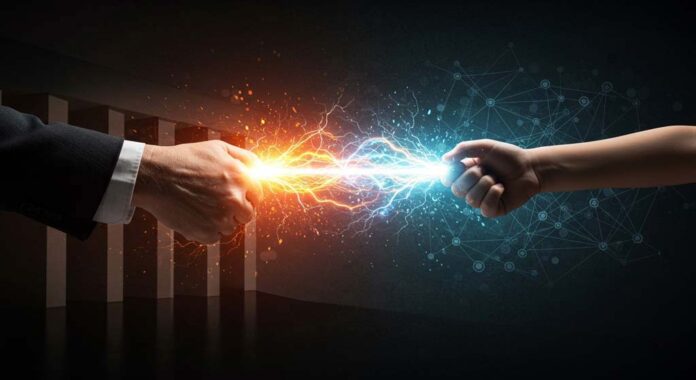The transformation of power reshapes our world in ways few fully comprehend. Years ago, I read Moisés Naím’s thought-provoking book “The End of Power,” its observations have stayed with me as I’ve watched power structures evolve across society.
Recently, I’ve found myself revisiting these ideas as I prepare for upcoming posts on power dynamics. What struck me most upon reflection wasn’t simply power’s decay, as Naím suggests, but its fundamental transformation of power structures across every level of society.
When Mark Zuckerberg selected “The End of Power” for his inaugural “Year of Books” reading challenge in 2015, it triggered an unexpected surge in demand. The publishers scrambled to meet orders, completely caught off guard by the sudden interest.
Zuckerberg highlighted how the book examines “how the world is shifting to give individual people more power that was traditionally only held by large governments, militaries and other organisations.” This observation has only grown more relevant with time.
Power isn’t disappearing; it’s redistributing. From the Middle East to corporate boardrooms, religious institutions, and social media platforms, we’re witnessing a shift that affects us all.
This transformation creates unexpected opportunities and challenges that affect our daily lives and how we perceive our rapidly changing world.
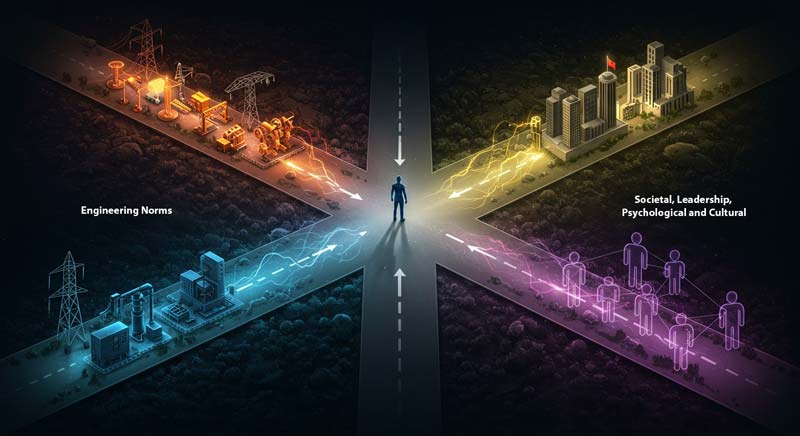
Power and Its Many Forms
At its core, power is about influence and control. Throughout my engineering career and broader studies of society, I’ve observed how power operates differently across contexts.
Naím defines power as “the ability to direct or prevent the current or future actions of other groups and individuals.” Yet this definition barely scratches the surface of power’s complexity.
Defining Power in Context
Power takes various forms depending on where and how it’s exercised. In politics, it manifests as authority to create and enforce laws. In economics, it appears as market control and financial leverage.
Socially, it emerges through influence over public opinion and cultural norms. The transformation of power begins with recognising these different contexts.
Four channels through which power typically operates include:
- Coercion (force or threat of force)
- Obligation (moral codes and social expectations)
- Persuasion (changing perceptions and beliefs)
- Inducement (offering rewards for compliance)
What’s fascinating is how the effectiveness of each channel has shifted dramatically in recent decades. Coercion, once the backbone of authoritarian power, increasingly faces resistance from empowered populations.
Engineering Versus Societal Power
My background in engineering offers a unique perspective on understanding power. In engineering, power refers to energy transfer rates; electrical power (volts × amps), mechanical power (force × velocity), or hydraulic power (fluid pressure). These are measurable, predictable, and follow physical laws.
Societal power couldn’t be more different. It’s fluid, contested, and often impossible to quantify. The transformation of power in society follows no physical law, and it responds to human psychology, technological change, and complex social interactions.
This distinction helps explain why traditional power-holders often miscalculate. They treat societal power like engineering power, which can be measured, contained, and directed with predictable outcomes when it behaves according to entirely different principles.
The Transformation of Power in Multiple Dimensions
The transformation of power operates simultaneously across numerous dimensions:
- From concentrated to diffuse (fewer gatekeepers)
- From vertical to horizontal (flatter hierarchies)
- From unidirectional to multidirectional (two-way communication)
- From institutional to individual (personal platforms)
- From stable to volatile (rapid shifts in influence)
This multidimensional shift explains why governments struggle to control narratives, why corporations face unprecedented scrutiny, and why religious authorities like Pope Francis find their moral authority increasingly questioned.
Even the Pope, who passed away yesterday, sought to transform the Church by focusing on helping the poor and embracing a simpler lifestyle. He recognised how power dynamics were changing within religious institutions. Traditional power centres haven’t merely weakened—they operate in an entirely new landscape where the rules of engagement have fundamentally changed.

The Transformation of Power in Traditional Structures
The transformation of power is perhaps most visible in traditional structures that once seemed unassailable. Governments, religious institutions, media conglomerates, and celebrity culture are experiencing dramatic shifts in their ability to command attention, shape narratives, and influence behaviour.
From Centralised to Distributed Authority
Traditional governance relied on centralised authority, and decisions flowed from the top down with limited input from below. Now, we see a shift toward more distributed models.
Leaders must contend with public opinion unprecedentedly, even in authoritarian states. The Arab Spring demonstrated how quickly centralised power can crumble when populations mobilise through new communication channels.
What makes this shift remarkable isn’t just technology but changing expectations. People worldwide increasingly demand accountability and participation in decisions that affect them. The transformation of power isn’t just about tools; it reflects evolving perceptions about who deserves a voice.
The Decline of Legacy Media Influence
Legacy media once controlled information flow with remarkable consistency. A handful of publishers, broadcasters, and editors determined what constituted “news” and shaped public discourse accordingly. Their power stemmed from exclusive access to distribution channels, printing presses, broadcast frequencies, and delivery networks.
Digital platforms have shattered this monopoly. Now, anyone with internet access can publish content globally. This shift has fundamentally altered how information flows, who creates it, and who benefits from it. The transformation of power in media has democratised voices while simultaneously fragmenting audiences and creating new challenges around misinformation.
Legacy outlets haven’t disappeared, but they compete for attention in a radically different environment. Their authority no longer comes from exclusivity but must be earned through quality, relevance, and trust, a fundamental shift in the power dynamic between media producers and consumers.
Celebrity Culture and the New Influencers
Hollywood studios and entertainment conglomerates once manufactured celebrities through tightly controlled systems. They decided who received attention, managed public image, and profited tremendously from this control. The transformation of power in celebrity culture reflects broader societal shifts toward more direct creator-audience relationships.
Today’s influencers often bypass traditional gatekeepers entirely. They build audiences directly, monetise through multiple channels, and maintain ownership of their content and personal brands. This shift doesn’t just change who becomes famous; it transforms the very nature of influence and how it generates value.
What’s particularly striking is how this shift mirrors broader trends in power distribution. Just as political power has moved from centralised authorities to more distributed networks, cultural influence has similarly fragmented and democratised, with positive and problematic consequences.
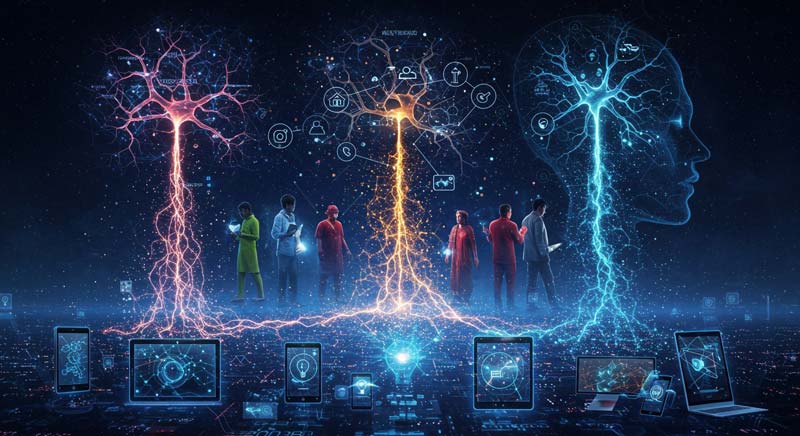
Key Catalysts Driving Power Redistribution
Several fundamental forces accelerate the redistribution of power across society. These catalysts don’t just enable change; they actively drive it, creating conditions where traditional power structures struggle to maintain their former dominance.
Digital Revolution and Social Media
The internet’s structure challenges centralised control. Unlike broadcasting, which flows one way from few to many, digital networks enable many-to-many communication. This architectural difference fundamentally alters information flow and, consequently, power dynamics.
Social media platforms have amplified this effect. They’ve created spaces where ideas can spread horizontally without traditional gatekeepers. The resulting environment simultaneously empowers individuals and creates new vulnerabilities.
Manuel Castells extensively documented in his research on network society that the transformation of power through digital platforms means greater access to information and increased vulnerability to manipulation.
What makes this shift particularly consequential is its acceleration effect. Digital technologies increase the velocity of information exchange, allowing new ideas, movements, and challenges to established power to emerge and gain traction with unprecedented speed.
Demographic and Economic Shifts
Global demographic changes directly impact power dynamics. Younger populations with different expectations about authority, participation, and rights reshape institutions from within and without. Meanwhile, urbanisation concentrates populations in ways that facilitate mobilisation around shared interests.
Economic changes further drive this redistribution. As middle classes grow in developing regions, power shifts away from traditional Western centres. Economic inequality creates tension between institutional control and popular demands for inclusion within countries.
The transformation of power through economic shifts means legacy powers must adapt to new economic realities or face declining relevance.
These demographic and economic forces operate more slowly than technological changes but create more profound, lasting shifts in power structures over time.
The Transformation of Power Through Changing Mentalities
Perhaps the most profound catalyst is the shift in human expectations and beliefs. People worldwide increasingly question authority rather than accept it. They demand evidence rather than assurances. They expect participation rather than dictation. The transformation of power reflects this fundamental shift in mentality.
Naím identifies three revolutionary changes:
- The “More Revolution” (increases in population, literacy, and living standards)
- The “Mobility Revolution” (unprecedented movement of people, goods, and ideas)
- The “Mentality Revolution” (changing expectations and aspirations)
This mentality shift explains why power is not just changing hands but changing in nature. Authority increasingly requires transparency, responsiveness, and meaningful participation to maintain legitimacy, a profound departure from historical norms.
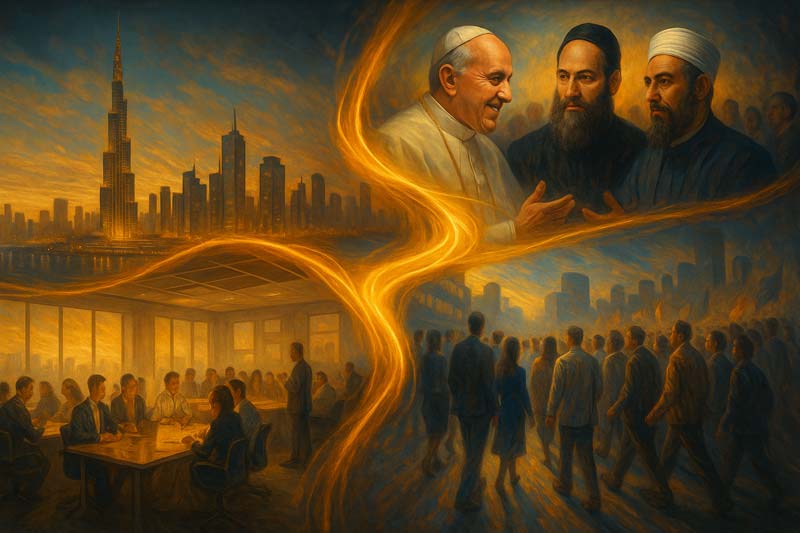
Power Shifts Across Different Domains
The redistribution of power manifests differently across various domains. As traditional power structures evolve, each sphere experiences unique challenges and adaptations.
Geopolitical Power Changes in the Middle East
Middle Eastern countries, such as Saudi Arabia, Qatar, and the UAE, demonstrate a stark evolution in power projection. Despite their relatively tiny populations, these nations wield tremendous global influence through aggressive economic strategies. Their immense oil and gas wealth has enabled them to acquire critical infrastructure across Europe and North America: major airports, utilities, prime real estate, and vital services.
This economic colonisation allows them to project influence far beyond what their population size would traditionally permit. Unable to compete through conventional military might or demographic weight, they’ve instead purchased seats at tables of power worldwide.
The transformation of power here reveals a calculated strategy. When you cannot dominate through traditional means, buy the infrastructure that underpins Western economies.
These regimes carefully maintain traditional governance structures at home while aggressively expanding economic control abroad, creating influential leverage points within Western democracies.
Their long-term planning through initiatives like Saudi Vision 2030 shows an acute awareness that hydrocarbon dominance is expiring, pushing them to secure permanent influence through strategic ownership of Western assets.
This represents power transformation at its most calculated and effective; wealth converted directly into global political influence. Joseph Nye observed that this represents a fundamental shift in how power operates in international relations.
Religion’s Evolving Influence
Religious institutions have experienced profound shifts in authority and influence. Traditional institutions like the Catholic Church and the Church of England once wielded enormous power over moral standards, education, and social norms. Their authority extended far beyond spiritual matters into legal frameworks and daily life.
Today, their influence varies dramatically by region and demographic. Traditional religious authority has diminished in prosperous, educated societies as people increasingly form individual moral frameworks. Meanwhile, prosperity-focused evangelical movements gain traction in regions facing economic challenges, offering hope through more personal spiritual connections.
The transformation of power in religious contexts reflects broader societal shifts toward individualisation and away from institutional authority. Religion hasn’t disappeared but has transformed, becoming more personal in some contexts while remaining communal in others, with profound implications for social cohesion and moral consensus.
Workplace Dynamics and Employee Voice
Corporate power structures have undergone remarkable changes. Traditional top-down management models increasingly lead to more collaborative approaches as organisations recognise the value of distributed expertise and employee engagement. Workers expect a greater voice in decisions and more flexibility in work.
Social media and internal communication platforms amplify employee voices, making it harder for leaders to control narratives about workplace conditions. The growing emphasis on diversity, equity and inclusion further challenges traditional power hierarchies. The transformation of power in workplaces reflects changing expectations about authority, participation, and individual agency.
This shift creates both opportunities and challenges. More engaged workforces can drive innovation and adaptation, but decision-making may become more complex and time-consuming. Finding the right balance between distributed input and effective action remains a central challenge for modern organisations.
The Transformation of Power in Population Movements
Perhaps the most profound shift is occurring in how populations relate to authority. Across diverse countries and political systems, people increasingly demonstrate a willingness to challenge established power. The power transformation between rulers and populations represents a fundamental shift in the social contract.
Three key factors drive this change:
- Information access through digital platforms reveals alternative possibilities and undermines propaganda
- Economic frustration when development stalls or benefits accrue primarily to elites
- Global examples that demonstrate the possibility of successful resistance
What’s remarkable is how psychological barriers to resistance have weakened. Even where repression remains severe (as in Russia), the fact that challenges co-occur demonstrates shifting power dynamics. Fear increasingly gives way to possibility, a profound psychological transformation with far-reaching implications for governance worldwide.
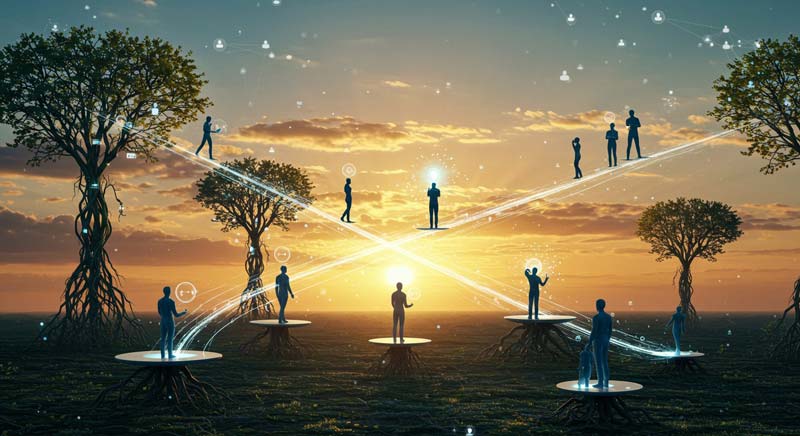
The Transformation of Power in Future Society
As we look ahead, the redistribution of power creates opportunities and challenges. Recognising these shifts provides insight into a rapidly changing landscape where traditional assumptions about authority, influence, and control no longer apply.
Balancing Diffused Power and Effective Governance
The transformation of power creates a central tension: maintaining effective governance while embracing more distributed authority. When power diffuses widely, decision-making can become paralysed. Yet returning to more centralised models risks ignoring the legitimate demands for voice and participation that drive current changes.
This tension manifests in politics as polarisation, in media as fragmentation, in workplaces as conflicts over autonomy, and in international relations as the declining effectiveness of multilateral institutions. Finding new models that balance inclusive participation with decisive action represents one of society’s central challenges.
It seems clear that simply attempting to reassert traditional authority will not succeed. The forces driving power’s transformation run too deep and operate across too many dimensions. Instead, we need innovative approaches that harness the energy of distributed power while maintaining sufficient coordination to address complex challenges.
Personal Implications of Power Redistribution
At a personal level, these changes create both responsibilities and opportunities. The declining power of traditional gatekeepers means individuals must develop stronger critical thinking skills and information literacy. Yet, it also creates unprecedented opportunities to build influence around ideas, causes, and communities that matter.
Power hasn’t disappeared; it has become more accessible and contested. This new landscape rewards adaptability, authenticity, and building trust across networks. Those who understand this transformation of power can navigate it more effectively, whether in career development, community organising, or personal growth.
Perhaps most important is recognising that power’s transformation isn’t simply something that happens to us; it’s something we actively shape through our choices about what information we consume, what voices we amplify, and how we engage with traditional institutions and emerging alternatives.
The end of power as we knew it doesn’t mean it has vanished. Instead, it has transformed into something more fluid, dynamic, and broadly distributed, creating risks and opportunities that will shape society for decades.
Sources
- Castells, M. (2013). Communication Power. Oxford University Press.
- Harari, Y.N. (2018). 21 Lessons for the 21st Century. Jonathan Cape.
- Naím, M. (2013). The End of Power: From Boardrooms to Battlefields and Churches to States, Why Being In Charge Isn’t What It Used to Be. Basic Books.
- Moisés Naím, Biography, Website [Accessed 10th January 2022]
- Nye, J. S. (2011). The Future of Power. PublicAffairs.


